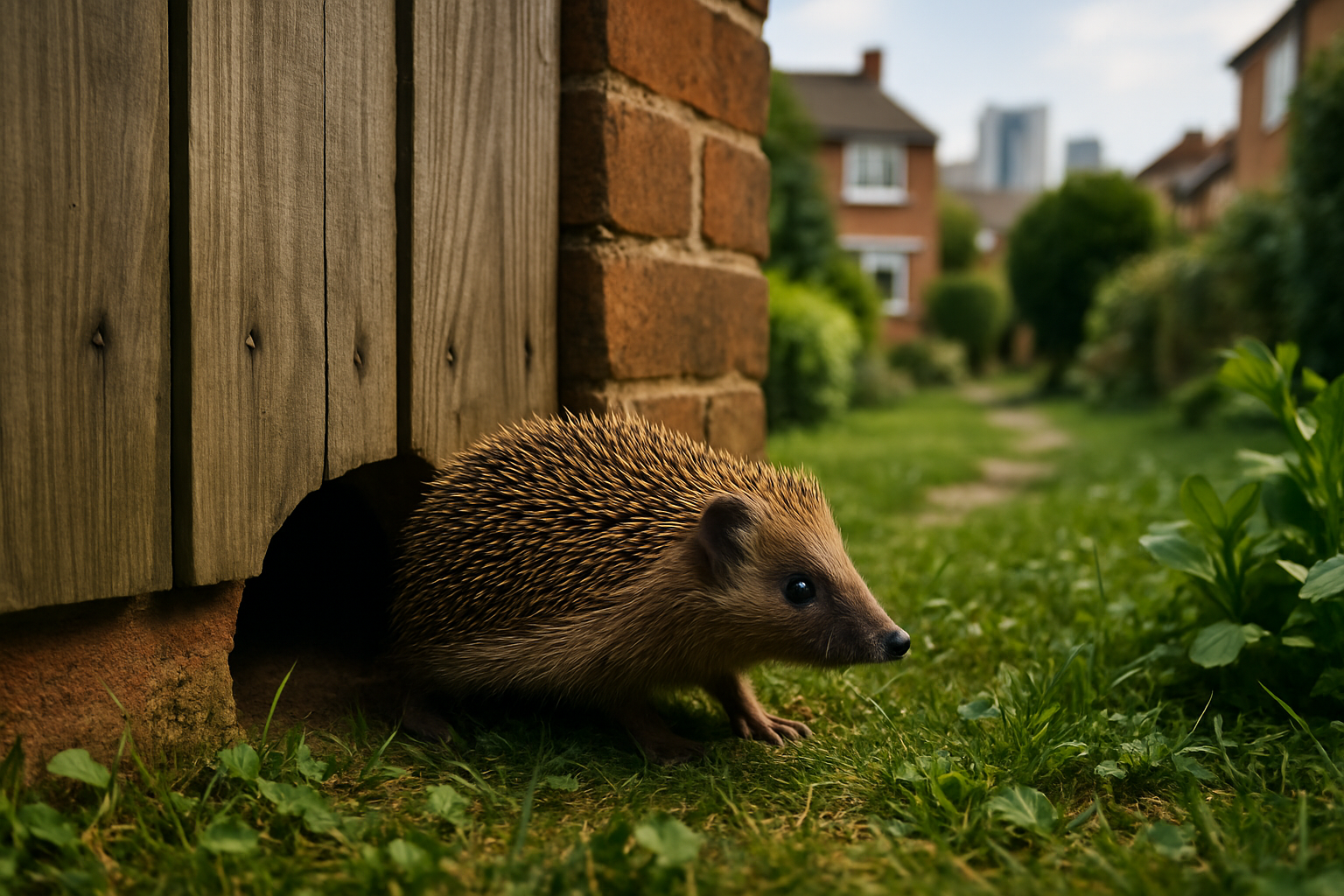Hedgehog Highways: Connecting Urban Gardens for Wildlife
In the bustling landscapes of modern cities, an innovative conservation effort is taking root. Hedgehog highways, a network of small openings in garden fences and walls, are transforming urban environments into wildlife corridors. This grassroots movement is not only aiding the survival of hedgehogs but also reshaping our approach to urban wildlife conservation.

As cities expand and green spaces shrink, hedgehogs find themselves trapped in isolated pockets of habitat. These small, spiny mammals require extensive territories to forage, mate, and thrive. The average hedgehog roams up to two kilometers each night in search of food and potential mates. However, modern urban design, with its maze of fences and walls, has severely restricted their movement.
The Birth of Hedgehog Highways
The concept of hedgehog highways emerged as a simple yet effective solution to this problem. Pioneered by wildlife enthusiasts and conservation groups in the UK, the idea involves creating small, 13x13 centimeter holes at the base of garden fences and walls. These openings are large enough for hedgehogs to pass through but too small for most pets, striking a balance between wildlife conservation and domestic concerns.
The movement gained significant traction in 2015 when the British Hedgehog Preservation Society launched the Hedgehog Street campaign. This initiative encouraged homeowners to collaborate with their neighbors in creating interconnected wildlife corridors. The campaign’s success has been remarkable, with over 100,000 hedgehog highways registered across the UK as of 2023.
Implementation and Design
Creating a hedgehog highway is a straightforward process that can be undertaken by any homeowner or community group. The most common method involves cutting small holes in wooden fences or removing bricks from the base of walls. For those seeking a more polished look, specially designed hedgehog highway grilles are available in the market, ranging from £5 to £20.
Landscape architects and urban planners are increasingly incorporating these wildlife passages into new developments. Some forward-thinking municipalities have even begun mandating the inclusion of hedgehog highways in new housing projects, recognizing their value in maintaining urban biodiversity.
Beyond Hedgehogs: Wider Ecological Benefits
While hedgehogs are the namesake beneficiaries of these passages, the impact extends far beyond a single species. Small mammals like mice and voles, as well as amphibians like frogs and toads, also utilize these openings. This increased connectivity not only aids in the movement of wildlife but also facilitates gene flow between populations, crucial for maintaining genetic diversity and resilience in urban ecosystems.
Furthermore, the creation of hedgehog highways often sparks a broader interest in wildlife gardening. Homeowners who participate in the initiative frequently report an increased awareness of local biodiversity and a desire to make their gardens more wildlife-friendly. This ripple effect can lead to the creation of more diverse habitats within urban areas, benefiting a wide range of species.
Challenges and Solutions
Despite its apparent simplicity, the hedgehog highway movement faces several challenges. One of the primary obstacles is raising awareness and encouraging widespread participation. Many homeowners are unaware of the plight of urban wildlife or the simple steps they can take to help.
To address this, conservation organizations have launched extensive education campaigns. These efforts include distributing informational leaflets, organizing community workshops, and leveraging social media to spread the message. Some groups have even developed mobile apps that allow users to map hedgehog sightings and highway locations, creating a citizen science database that aids in conservation efforts.
Another challenge lies in maintaining the continuity of these wildlife corridors over time. As properties change hands or fences are replaced, there’s a risk that hedgehog highways may be inadvertently closed off. To combat this, some communities have begun installing permanent signage near these openings, serving as a reminder to current and future residents of their importance.
The Future of Urban Wildlife Conservation
The success of hedgehog highways has inspired similar initiatives around the world. In North America, backyard wildlife corridors are being created to aid the movement of species like box turtles and salamanders. In Australia, urban planners are exploring ways to incorporate wildlife passages into city designs to benefit native marsupials.
As our understanding of urban ecology grows, so too does the potential for innovative conservation strategies. The hedgehog highway movement demonstrates that small, collective actions can have a significant impact on wildlife conservation. It serves as a powerful example of how urban design can evolve to coexist with, rather than exclude, wildlife.
In the face of global biodiversity loss, initiatives like hedgehog highways offer a glimmer of hope. They remind us that conservation is not just the domain of vast wilderness areas but can begin in our own backyards. As cities continue to expand, the integration of wildlife-friendly features into urban planning will become increasingly crucial. The humble hedgehog highway may well be paving the way for a more harmonious coexistence between humans and wildlife in our ever-growing urban landscapes.





